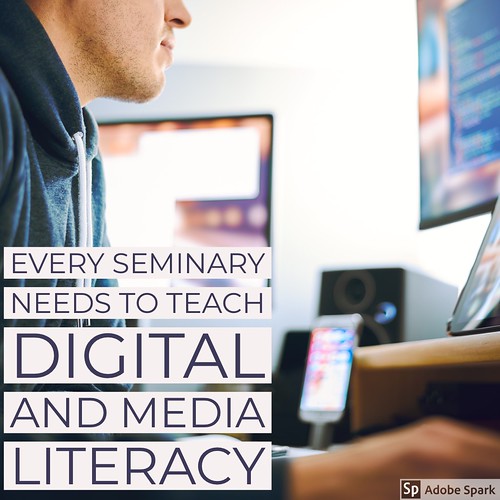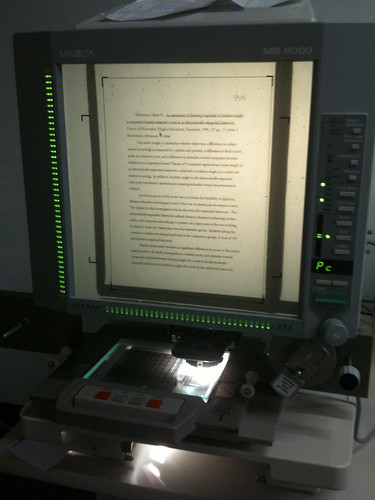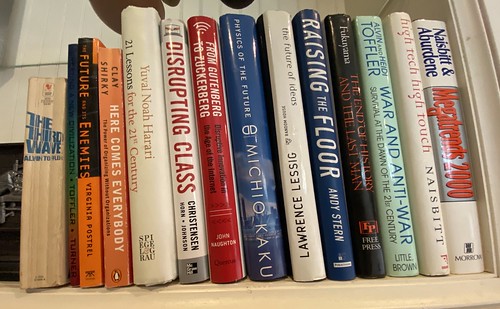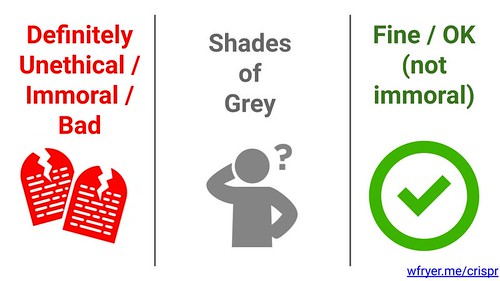I am enjoying the opportunity to teach adult Sunday School (again) at our church this year, and utilize Francis Collins‘ (@NIHDirector) book, “The Language of God: A Scientist Presents Evidence for Belief” as our initial course text for our class titled, “Curiosity and Questions: Jesus and Science.” This week in preparing for our lesson and today in class, I was struck by this idea: Every Seminary / Divinity School in the world needs to offer courses and instructional support for both digital and media literacy. In this post, I’ll explain what I mean and why I believe this is true.
We are living in the most exciting era of human history for learning and idea sharing. Just as the introduction of the metal moveable type printing process into Europe in 1450 by Johannes Gutenberg ushered in groundbreaking, disruptive changes in the way ideas were shared and disseminated throughout the Western world, the accelerating effects of the Internet, the World-Wide Web, mobile phones and Moore’s law of integrated circuits are transforming our communication landscape into an alien / foreign land for many people schooled in the 20th century following the models of the 18th. Most of our institutions of higher education, including Seminaries, are based on the learning assumptions and models of the past rather than our present.
In the past, we were very limited in the access we enjoyed to ideas and to other people. Who remembers using a library card catalog, finding an article on a topic of inquiry on microfiche / microforms, or having to wait days (or even weeks) for a book requested via “Interlibrary loan” to finally arrive?! That was “normal” in an era of information scarcity. Now we live an “attention economy,” and many old assumptions about information, communication, and learning are obsolete.
Clay Shirky’s (@cshirky) 2008 book, “Here Comes Everybody: The Power of Organizing Without Organizations,” remains 11 years later one of the best primers on today’s transformed digital learning and idea sharing landscape. Absent a global cataclysm, we’re not going back to an era of information scarcity. Teachers and learners, therefore, need a NEW set of literacy skills to access, filter, evaluate, utilize, and share/publish ideas. Educational thought leaders like David Warlick (@dwarlick) have been beating this drum for years. It’s time we not only paid attention: We also need to update our academic course catalogs. Digital and media literacy are essential skills for everyone, not just the educational technology crowd.
Access to information today is a relatively minor challenge: “Filtering the ExoFlood” of data and messages swirling all around us has become “our new normal” and a significant obstacle to learning. This does not just affect a small subset of society, everyone is awash in bits. Our lives are increasingly becoming digital, as Nicholas Negroponte observed in 1995. We live in both analog and digital spaces, and we need teachers and teacher educators who can both model and help mentor students as well as colleagues into our brave new world of near-ubiquitous Internet access (in many parts of the developed world) and “publish at will” digital sharing.
To highlight some of the skills our teachers and instructors today need to be effective, let’s look at some of the ways I shared ideas and media with our Sunday School class this week.
We’re using Google Classroom (free) to share slides, videos, photos, links, and other resources from our class. This is very normal in most U.S. universities today, and in a growing number of high schools as well as middle schools, especially as 1:1 learning initiatives and BYOD initiatives become more common. It is NOT common in my experience, however, for digital sharing platforms like this to be used in adult Christian education. This is a missed opportunity. Certainly many of our churches are filled with older adults who may be reluctant and even fearful to use new kinds of technologies. Just as many grandparents have embraced the opportunity to connect with their grandkids via FaceTime videoconferencing or Seesaw Learning Journals as students share their schoolwork digitally with family members, many church members (in my experience) are eager to use digital tools to extend their learning and connect outside of class with both content and other classmates.
It’s not enough to just setup a Google Classroom and share links to resources, however, to effectively teach and engage a class or group of learners. Lessons need to be designed to utilize media in pedagogically appropriate ways, encouraging students to actively think and process ideas both individually and collaboratively. As an example, we’ve used the “See – Think – Wonder” thinking routine several times in class this year, to both analyze and think deeper about video clips we’ve watched and passages of text we’ve read. A couple weeks ago when we studied CRISPR and the ethics of genetic editing, we brainstormed potential uses of these technologies which would fall into three different ethical categories. The creation of these slides using copyright friendly media sources like The Noun Project and Unsplash, the sharing of these slides via Google Slides and Google Classroom following a “Presentation Zen” pedagogy of multimedia slideshow development… All of these involve digital and media literacy skills which pastors, clergy, and anyone else involved in Christian education today need to master and utilize effectively.
A final example I’ll share to highlight the digital and media literacy skills I believe are vital for Seminaries as well as all institutions of higher learning focuses on video sharing. I’m fond of saying “Video is the pencil of the 21st century,” and in fact plan to put this saying in large, lasercut letters on the wall of my classroom later this year. In saying this, I mean learners of all stripes today need to seamlessly be able to utilize and express themselves with video as adeptly as we’ve expected them to be able to in the past using pencils and pens.
“Chunking content” into bite size, readily “digestible” pieces is an essential principle of instructional design as well as human psychology. Today to share a 1.5 minute video clip with my class which we discussed, I used a website to make a link to the video segment of interest. Since I’m now using my Apple Watch to advance / “drive” my slideshows in class, I also used a website to download a temporary, offline copy of the YouTube video we would watch, and then used QuickTime Player software to crop that video so it included just the 100 seconds I wanted. I then embedded that video clip into my Keynote software presentation. These kinds of digital literacy skills are invaluable when we want to effectively design lessons and share media with our students, not just “inside the 4 walls of our classroom” but also outside those walls when students want to continue their learning on their smartphone or computer at home, in a coffee shop, or anywhere else they have Internet access.
Media literacy and digital literacy skills are essential for everyone today, but particularly for teachers and educators. Does your Seminary or other college / university have required courses for students which explicitly teach these kinds of skills? We can’t assume tomorrow’s pastors and Christian educators will, by means of “instructional osmosis” via their past experiences in schools and classes, auto-magically acquire these skills. They won’t. These are pedagogic strategies wedded to instructional design and development skills which we need to explicitly teach and model. It may be time to not only expand your course catalog for students, but also change your “required course list” and hire new faculty with this skillset.
After reading this post, eventually, perhaps your Seminary (or other college/university) will want hire me full-time or part-time. If so, let’s get in touch! The need for the skills and dispositions I’ve highlighted here are only going to grow in the months and years ahead.
If you enjoyed this post and found it useful, subscribe to Wes’ free newsletter. Check out Wes’ video tutorial library, “Playing with Media.” Information about more ways to learn with Dr. Wesley Fryer are available on wesfryer.com/after.
On this day..
- Reflections on AI, China-U.S. Relations, Education & Innovation – 2020
- How Microsoft is Poised to Destroy MinecraftEDU – 2016
- Managing WordPress Installations in CPANEL (Monday Sept 28th) – 2015
- Don’t Equate Competency With Identity – 2014
- First iPad Digital Story with Hokusai and iMovie for iPad – 2012
- Google UK Employees talk about Family Internet Safety – 2010
- Join the K12Online08 flashback and K12Online09 preview – LIVE this Saturday on EdTechTalk! – 2009
- Help needed with WordPress plugin theme file syntax – 2009
- Digital Nation Call for Participation – Thinking about Digital Learning Activities – 2009
- COV project website updates and a group for Oklahoma TitleIID winning districts – 2008





